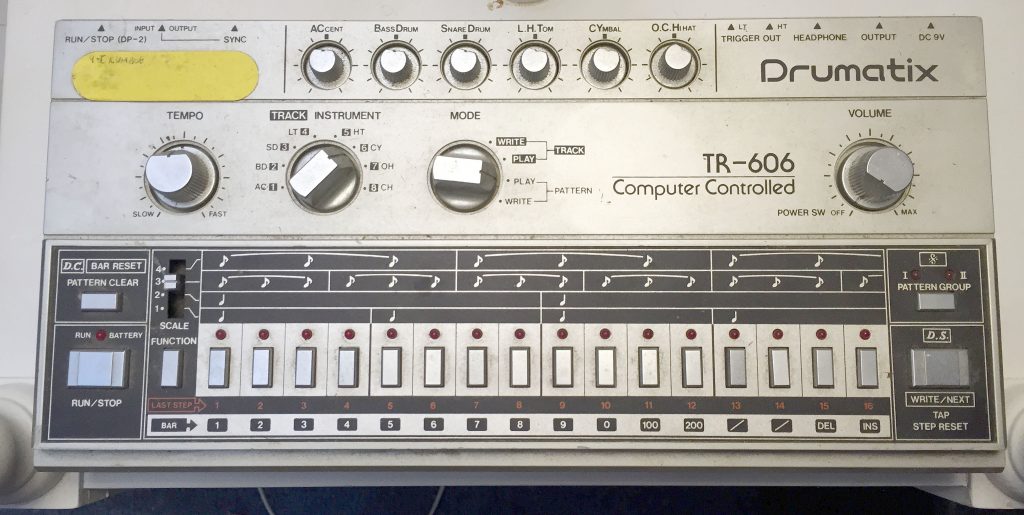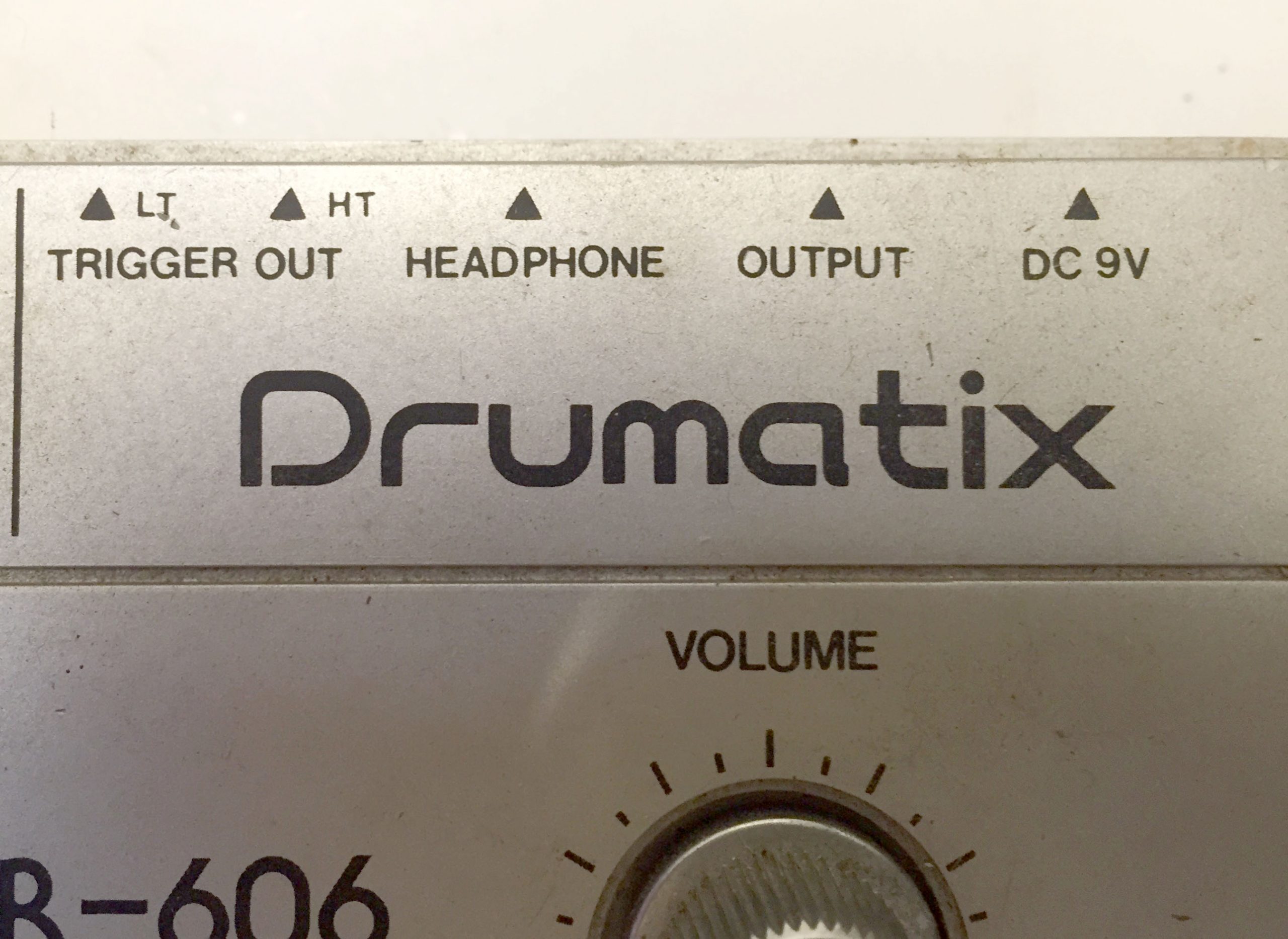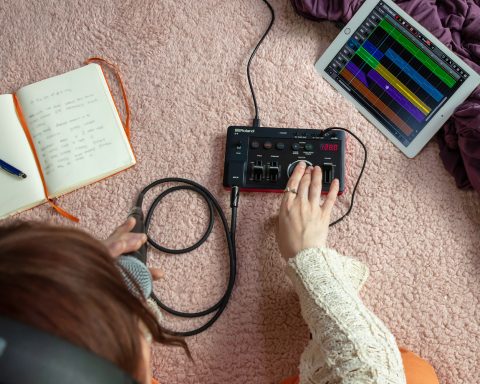Never count out the 606. The silver Drumatix box, 1981’s TB-303 sibling, heralded future compact electronic playthings. Yet, the world wasn’t ready. At least, not at first. The TR-606 Drumatix “rhythm machine” launched alongside the TB-303 Bass Line. They were the original “drum ‘n’ bass.” The products even shared the same form factor and knob layout.
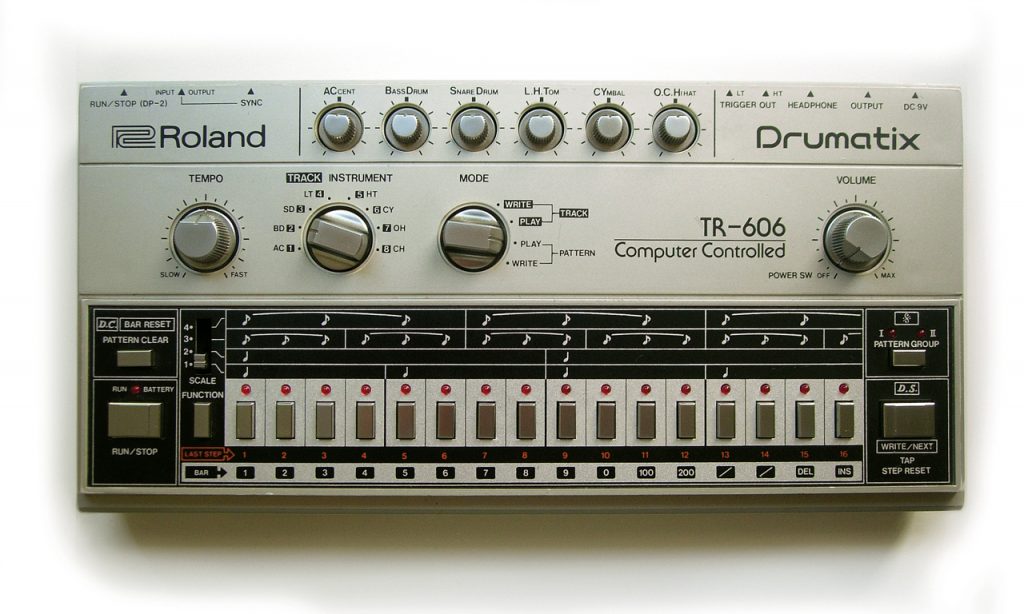

Silver Siblings
They were so close you might think the 606 was a 303 from a distance. Roland intended the two to work together. Program your bass part on the 303 (using keys “instead of strings,” said a 1982 US brochure). Then, punch in your rhythm part on the 606. Such functionality contrasted models by the competition. Many of these had only push-button, pre-programmed rhythm—think “bossa nova.”
In hindsight, it looks fantastic. The TR-606 boasted an impressive feature set. Plus, it came at a fraction of the price, size, and weight of the TR-808, CompuRhythm CR-series, or Roger Linn’s LinnDrum.
Sounds Galore
You have 32 rhythm slots, 16 steps (with up to 256 bars), battery operation, and a weight just over a couple of pounds (1 kg). It even came with internal analog drum sounds: kick, snare, toms, cymbal, hats. Users also got accent, trigger in, trigger out, and the ability to sync via DIN connector. It sounds almost like a modern spec sheet.
“They were so close you might think the 606 was a 303 from a distance. Roland intended the two to work together.”
Nevermind the Naysayers
40 years ago, however, the mass music market didn’t get it, and Roland discontinued the model in 1984. This meant a glut of TR-606 inventory made its way to the secondhand market and pawn shops.
Well, if you know the history of the TR-808 and TB-303, you can guess what happened next. Musicians picked up the bargain-bin box no one wanted and made wonderful stuff with it. The 606 repeats this cycle, on loop, surviving each successive wave of naysayers.
A Sonic Chameleon
The TR-606 endures for its crisp, punchy sound as well as trigger capabilities and extensive mods. Its tone comes from different circuits than what’s inside an 808 or 909. Unlike its siblings, the 606 doesn’t have a simple, straightforward narrative.
It didn’t define a genre, the way the 303 did with acid or the 808 and 909 did with hip-hop and techno and house. It has star owners—Massive Attack, Autechre—but one wouldn’t necessarily associate the box with them. The 606 is more like a chameleon. Its dry, wet, distorted, modded, circuit-bent sound shows up everywhere from punk to IDM.


"Unlike its siblings, the 606 doesn't have a simple, straightforward narrative."
Sisters of Mercy
The absence of swing does tend to push the original 606 to tracks that embraced its mechanical feel. (The new TR-06 adds swing in, so you’ve got no such limitation.) Early adopters included, famously, Leeds’ Sister of Mercy.
The Sisters helped earn the 606 a place in goth rock and post-punk/new wave, as in 1982’s “Alice.” Drum machines were novel enough that the band credited their robotic friend as “Doktor Avalanche.”
Drexciya
It is fair to associate the 606 with electro and Detroit. For a fresh, futuristic take on what makes the 606 circuits so unique, listen to Drexciya’s hypnotic sci-fi “Rublick’s Cube” from 1996.
Kid606 to NIN
Kid606, aka innovative producer Miguel Trost De Pedro, used it all the time, true to his name. But so did 808 State (on a track called 606, perhaps to avoid confusion). And you certainly know the 606 sounding brutal and robotic from Nine Inch Nails’ infamous “Closer.”
"The 606 is like a chameleon. Its dry, wet, distorted, modded, circuit-bent sound shows up everywhere from punk to IDM."
Mr. Oizo
Ironically, the very thing that repels some people from the 606 is what can make it a hitmaker. Mr. Oizo joked about the 606’s kick but that helped his massive 1999 hit “Flat Beat” stand out. In true underground style, he brags it wasn’t even properly mixed.
Dexter
Before swapping the minimal 606 kick for some booming 808, wait a moment. Listen to how producers like Amsterdam’s Dexter make that understated thump sexy. The cool heartbeat doesn’t drench the whole track. Rather, the 606 moves the affair along, keeping heads bobbing as various sounds move in and out of the spacious mix.
Plastikman
Then there’s the opposite extreme. For maximal 606 from a world-famous techno-minimalist, look no further than Plastikman’s “Helikopter.” At six minutes and twenty-five seconds, the track buzzes and whirs like the titular aircraft. All the while, snare rolls increase in intensity and shapeshift their patterns as Plastikman builds the groove.
Russel Ellington Langston Butler
The 606 sound continues to evolve. Bermudian Brooklynite Russell Ellington Langston Butler transforms the 606 into a brain-bending dancefloor machine. Langston Butler uses those triggers to full effect with doubled modular bleeps, as on his 2019 EP named for the instrument.
“It's sonically punchy but has the ability to get out of the way as well. So it's very adaptable in compositions."
-Adam Jay

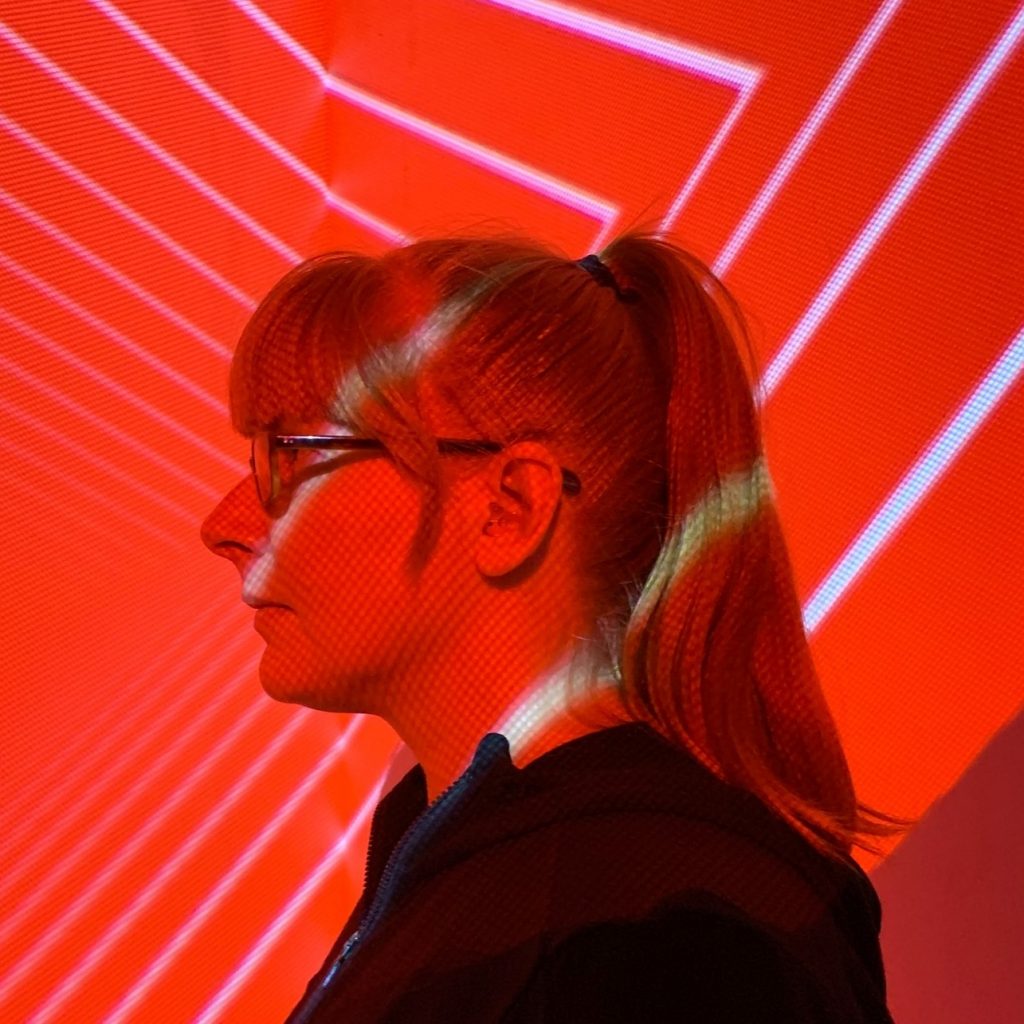
Adam Jay
“It’s sonically punchy but has the ability to get out of the way as well,” says producer Adam Jay, an Indianapolis-bred artist who prides himself on live performances that are 100% hardware. “So it’s very adaptable in compositions. You can make it the star, or you can make it the backup.”
Jay’s “Runaway Groove” is a resolutely 606-ish house track, further testimony to the sound’s timeless quality. This track for the underground label Detroit Underground sounds massive. Reserve it for your post-COVID playlists.
Erika
“Swoon, love that thing,” says Detroit producer Erika, who started on the 606 and never looked back. “The [606] is the first piece of gear I ever owned,” she says. “You’ll have to pry it from my cold, dead hands. I learned drum programming on it, took it to bed [with me] with headphones.”
Erika’s recent fifty-three minute live track, “The Filtered Sun,” provides a powerful example of her mastery of both the 606 and electronic textures in general. The artist describes the recording as “a live album about life underwater, heat and chemicals, light and motion, in alternate languages, across time.” The track’s rich atmosphere evokes all those things and more.
"The cluster of six sine wave oscillators running through parallel bandpass and high-pass filters clang with metallic fury."
Circuit Appeal
So what is it about the TR-606’s circuitry? It’s raw, simple. The kick is two oscillators run through a resonant twin-T filter – the same filter used on some guitar distortion pedals.
The snare is straightforward, too, with a characteristic high-pass filter. And the cymbal makes the package. The cluster of six sine wave oscillators running through parallel bandpass and high-pass filters clang with metallic fury. All respond in nuanced ways to accents. This helps the 606 sound subtler or more aggressive, even before you add outboard effects.
It has all the elegance of design associated with engineer Tadao Kikumoto and his team. Recall, this is the same crew behind the 808, 303, and 909. Still, the 606, perhaps more than the others, has also been heavily modded. The reason is apparent if you look inside one: clear, easily accessible exposed traces.
Alive and Kicking
The 606 is alive and well—and live. Artists like Erika, Adam Jay, and others are taking the little silver box into new cosmic worlds, a tiny space capsule. The Roland Cloud virtual version even brings the Drumatix vibe into DAWs.
Like the TR-06 hardware, the Roland Cloud version also includes swing/shuffle, opening it up to more genres. Somehow, nearly 40 years later, the 606 sounds like it was just invented to be whatever you want.
